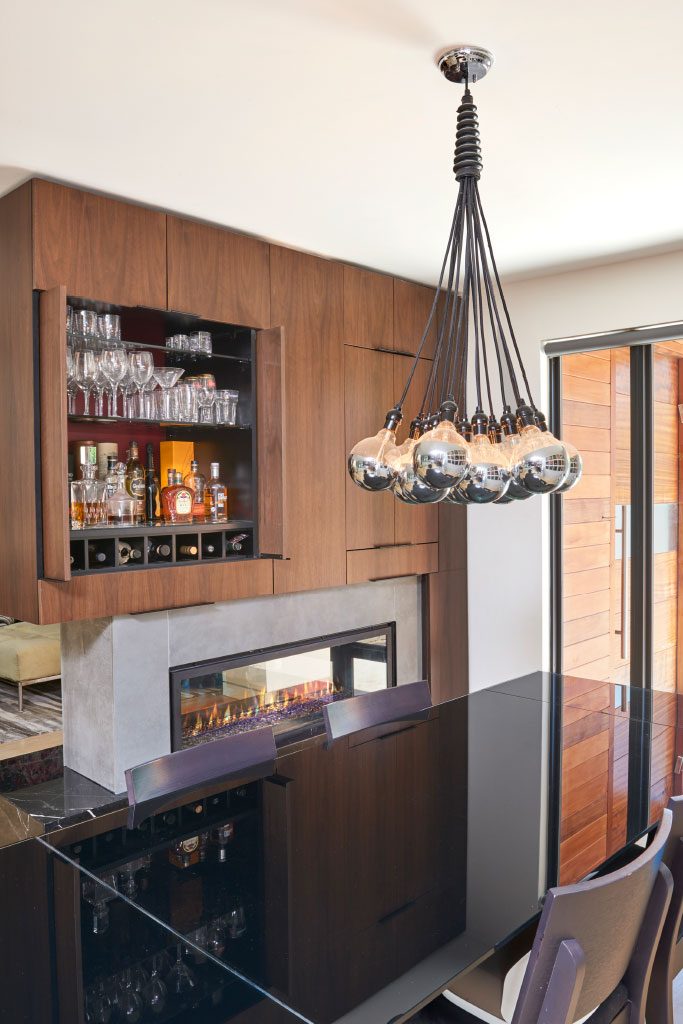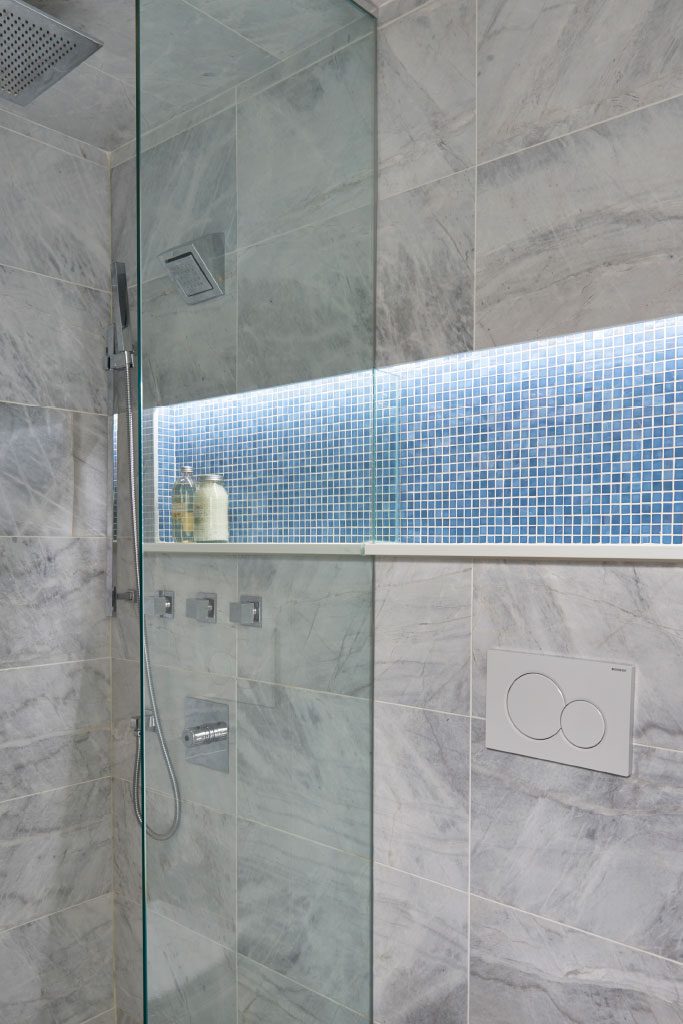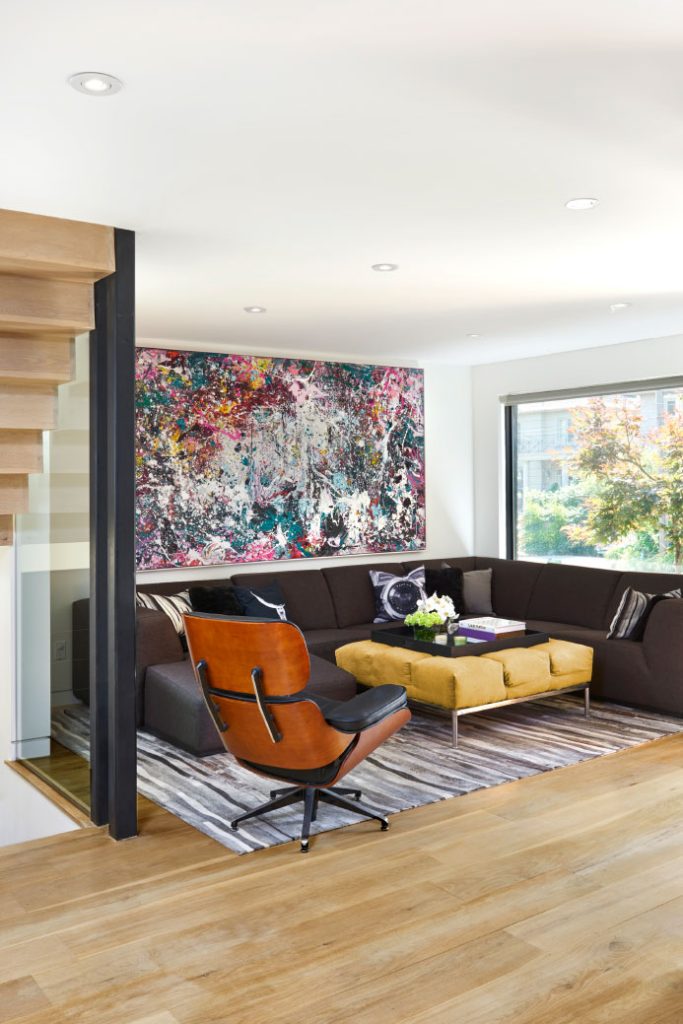
Nestled within a beautiful green pocket of an urban centre, we wanted to create a seamless connection between inside and out, bringing the feel of the surrounding tree canopy indoors. New, expansive floor-to-ceiling windows and sliding glass doors frame views and allow sunlight to permeate the space, even in the depths of winter. The central white oak staircase is stacked and housed in glass rails, seemingly suspended in mid-air, allowing light to spill down from the skylight above and into the main living space.
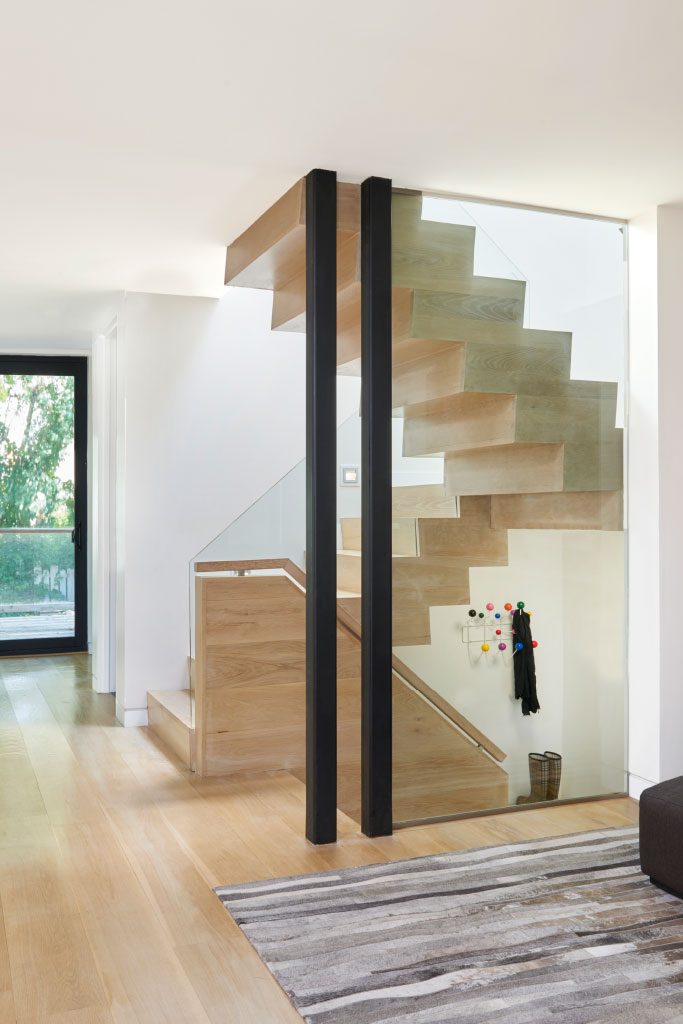
Clean-lined, airy spaces are articulated with just a few carefully chosen materials in a pared-back palette, acting as a quiet backdrop to the beauty of the outdoors visible throughout. Wide-plank white oak floors, a particularly stunning black walnut, and black marble are the natural canvas that allows the homeowners to add bursts of colour and pattern through a rotating collection of artworks, textiles and other materials. A built-in, double-sided glass fireplace delineates the family room from the dining area, adding life and warmth to both.

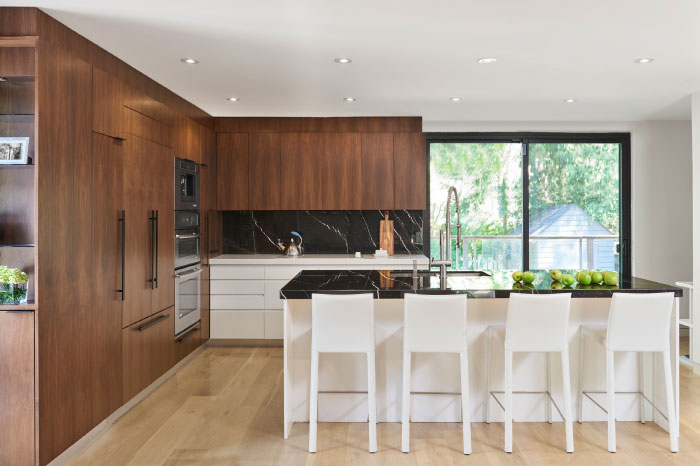
The transformation of House 66 exemplifies our signature approach to design solutions – use of space, natural light as a key architectural feature, materiality and meticulous attention to detail.
Guided by a desire for light and openness, as well as honouring the home’s warm, mid-century modern roots, the home underwent an intensive top-to-bottom renovation.
When it came to us, House 66 was previously used as a dog kennel and quite rundown. Yet the divided, post-war bungalow had a few (very well hidden) features hinting at its potential – a perfectly square ground floor plan and a 40-foot lot. House 66 is now a fluid collection of living areas that utilize natural materials in warm tones to create a modern, welcoming family home.
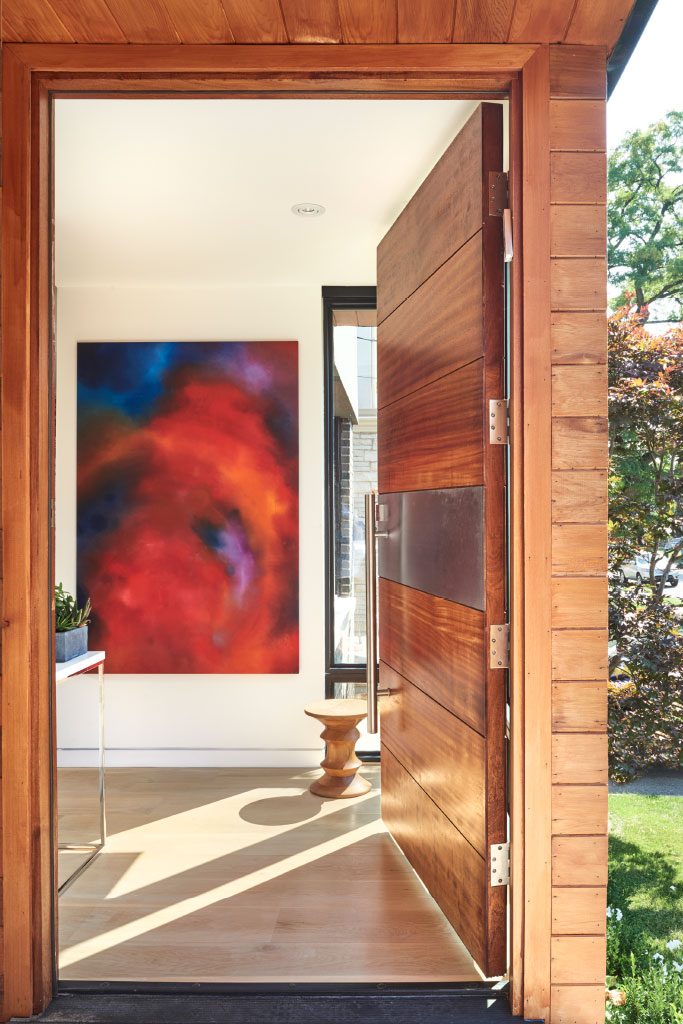
Working with the existing foundation and exterior walls, we deconstructed boundaries between “rooms” in favour of a modern floor plan that emphasizes connectivity and flexibility, maximizing the size of the ground floor. Traditional interior walls were eschewed; rooms are defined by subtle shifts in materials and detail, resulting in a continuous overlap in functionality between spaces. Millwork is skillfully used to create visual distinction and definition between rooms, yet give the illusion of spaciousness – one of the main design concepts of the home. The long line of beautiful black walnut millwork visible from the kitchen makes that space appear large with plenty of storage. Meanwhile, the opposite side of the walnut wall actually contains an open shelving unit for the adjacent dining room, making that space feel simultaneously larger.
